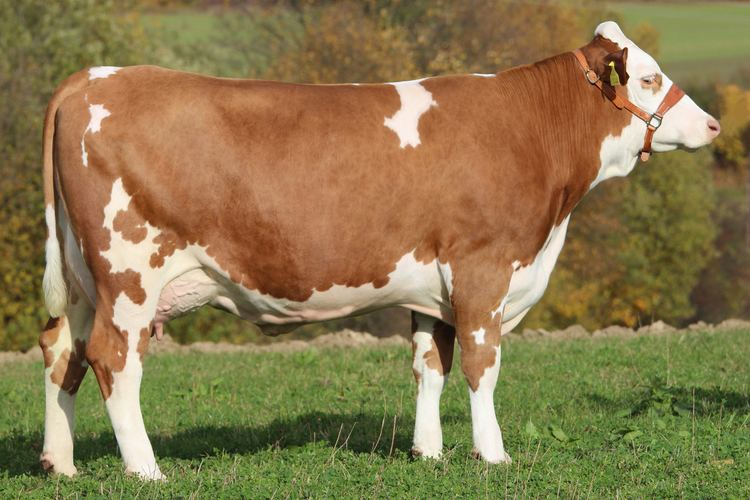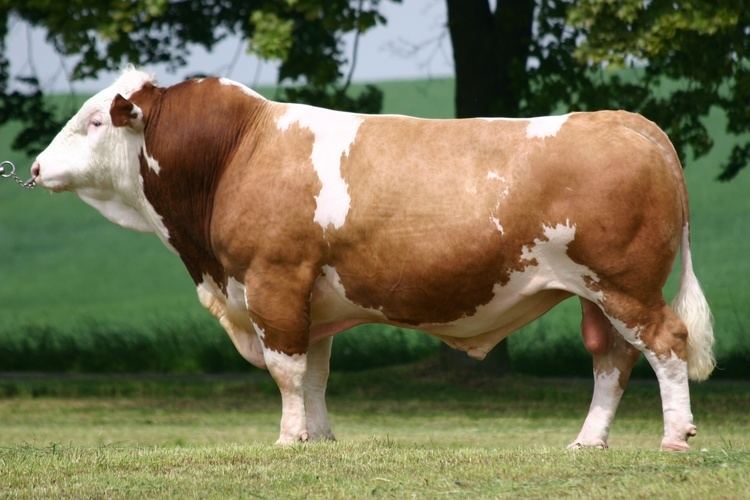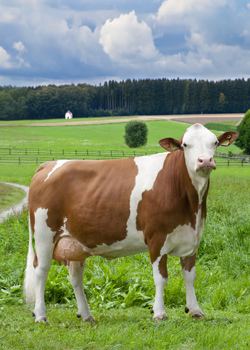Conservation status not at risk Distribution worldwide Rank Breed | Country of origin AustriaGermany Scientific name Bos taurus | |
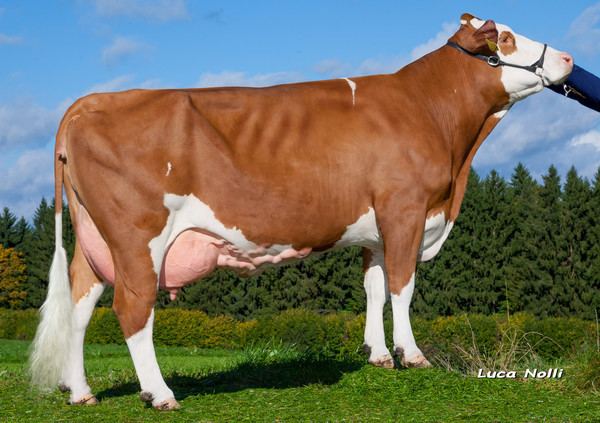 | ||
Use dual-purpose, meat and milkformerly triple-purpose: meat, milk, draughtcross-breeding Weight Male: 1100–1300 kgFemale: 700–800 kg Height Male: 150–165 cmFemale: 140–150 cm Similar Braunvieh, Holstein Friesian cattle, Brown Swiss, Charolais cattle, Pinzgauer cattle | ||
Fleckvieh breed succeeds in kenya
The Fleckvieh is a breed of dual-purpose cattle suitable for both milk and meat production. It originated in Central Europe in the 19th century from cross-breeding of local stock with Simmental cattle imported from Switzerland. Today, the worldwide population is 41 million animals.
Contents
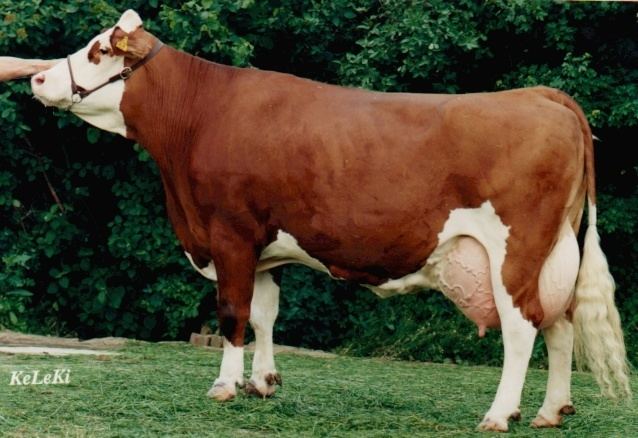
Fleckvieh simmental cows
History
The Fleckvieh originated in the Austrian Empire and the Kingdom of Bavaria from cross-breeding of local stock with Simmental cattle imported from Switzerland from about 1830. The Simmental had good milk-producing and draught qualities, and the resulting crosses were triple-purpose animals with milk, meat, and draught capabilities. The Fleckvieh is now a dual-purpose breed; it may be used for the production of beef or milk, or be crossed with dairy breeds or with beef breeds.
It is reported from several European countries, including Austria, Belgium, Germany, the Netherlands, and Spain, and also, since 2009, from Switzerland; in Hungary, the Fleckvieh is present on many small farms and its importance is growing steadily. It is also reported from other countries of the world, including Paraguay, Peru, and Uruguay.
Meat production
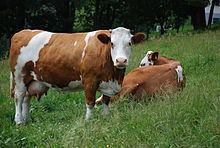
A comparison was made between the rates of muscle growth and energy use of Fleckvieh bulls as compared to German Black Pied (Schwartzbunte) bulls. The Fleckvieh bulls had faster growth rates, the carcasses had a smaller proportion of fat, especially abdominal fat, and the animals could be slaughtered at an earlier date on similar diets.
